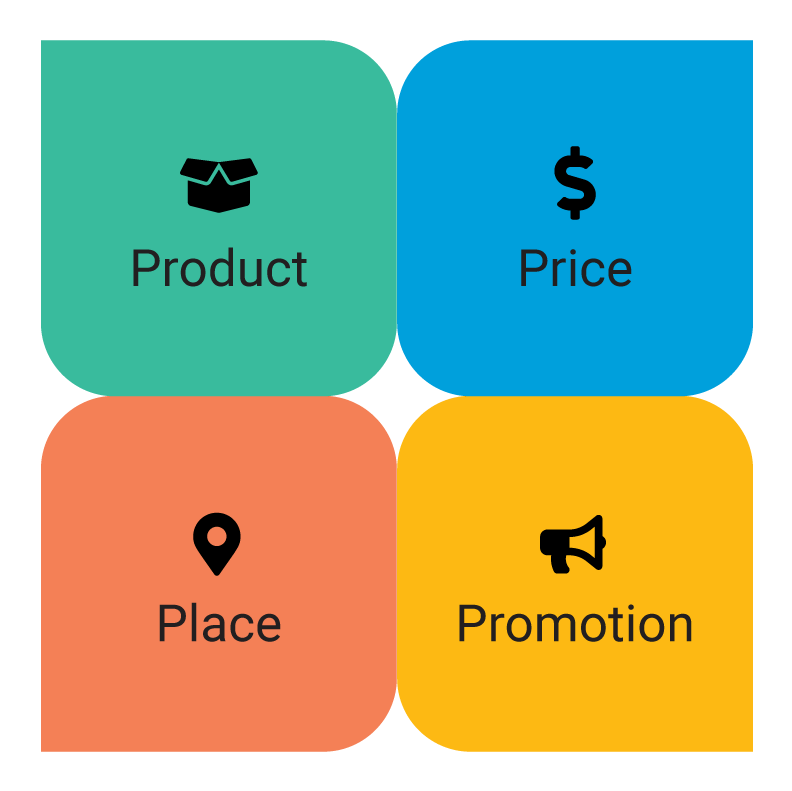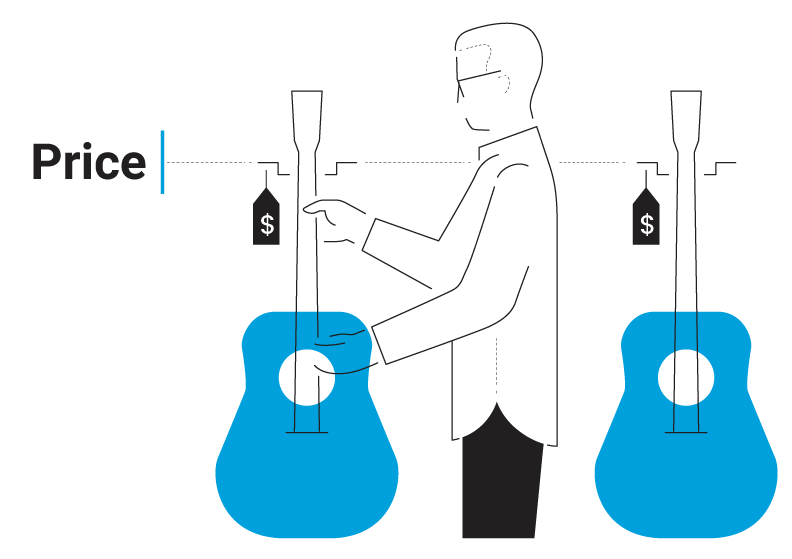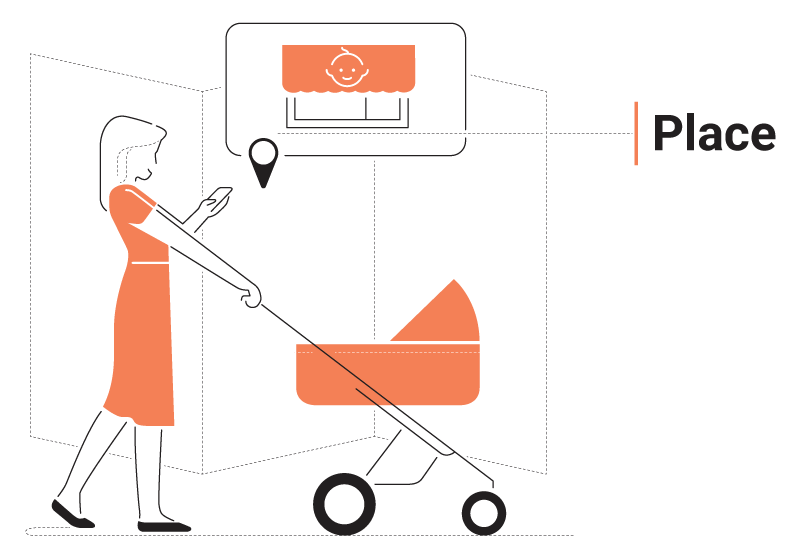Many businesses have never heard of the 4 ps of marketing. Which is unfortunate considering they are the very foundation of successful marketing in business. While they may seem simple on the surface, the concepts are quite in-depth and complicated.
Chances are you’re already implementing the 4 ps of marketing without knowing what they are or why they matter. While this route may work for a while, your marketing can only succeed long-term when you are intentional with your 4 ps.

History behind the 4 ps of marketing
It’s true that marketing in business has come quite far since its infancy. However, the foundation has long remained the same.
That foundation was popularized by Neil Borden in 1964. He published the article, “The Concept of the Marketing Mix” which explained the 4 ps of marketing. Big businesses quickly took note of his tactics; yet this idea is similarly as important for small businesses.
The first p of marketing: product

What is your company selling? From coffee mugs to ankle boots to candy bars to real estate services to violin lessons, a product (or service) is best described as what a business makes available to the consumer. Your marketing should serve to help make your product/service stand out.
On the surface it may appear obvious what you are selling. Therefore, you’re inclined to dismiss this first p. However, product isn’t only about the thing you sell.
It’s also about what sets that thing apart from your competition.
Whether your competition is local (example: dental services) or global (example: online coaching) you need to have a way to set yourself apart. Because if you are not unique in what you offer or how you offer it, there is little way to grow and thrive in today’s world.
For instance, consider that you offer guitar lessons. Someone might search for a local guitar teacher—why should they choose you over the twenty other teachers that pop up in their search?
Maybe you learned your style from Dave Grohl.
Maybe you offer more lessons for less money.
Consider what would set you and your offer apart from the crowd so that it is easier for someone to choose your product over the competition when marketing in business.
If you’re not sure what sets you apart, you can always ask potential or existing customers! Connect with your email list using a simple poll. For the guitar lesson example, you might ask an open-ended question, like:
What don’t you like about the local guitar lesson landscape?
Use the responses you receive to tailor your service to your existing audience and you may also see the increase in sales you’ve been missing.
If you get a variety of responses, consider a/b testing to decide what “stand out feature” is most likely to resonate with your target audience.
The second p of marketing: price

Chances are good that you’ve already set your pricing. However, if you’re struggling to make sales you may wonder—is it due to how much you’re charging?
While it’s a simple concept to grasp, price is difficult for a lot of companies to actually set. Business owners may find themselves wondering how to demonstrate the quality of what they sell while still ensuring it is affordable.
You may wonder if by setting a lower price point than your competition when marketing in business, you’re cheapening your product or service. And similarly, if you price yourself higher, are you asking for too much?
The answer is going to vary from business to business. Still, there are questions you can ask yourself which will hopefully make the answer clearer for your own business. Naturally, these will only work if you have a firm idea of your Ideal Customer Avatar (ICA).
What are my top 5 competitors charging for similar services?
How low can I charge and still meet my revenue goals?
How high can I charge without pricing out my target audience?
The third p of marketing: place

Where are you located? This doesn’t only apply to brick-and-mortar stores. It also applies to the internet.
If your business is performing its marketing or advertising on sites where your customer base isn’t—you may be doing more harm to your business than good. Consider social media platform audiences. The people you reach on Instagram are very different than the people you reach on Facebook.
Many businesses make the mistake of thinking their audience will come to them. While this is sometimes true, it’s still a bad rule of business. Your goal should always be to appear where your customer is.
Back to our guitar lessons example. Advertising local guitar lessons on a platform like LinkedIn probably won’t get you far. Mainly consisting of business professionals and home to multiple millionaires, LinkedIn users aren’t likely to connect with this kind of message.
On the other hand, newer social media platform TikTok is home to a younger audience and leans heavily into localized content. YouTube may also be worth exploring.
Learn more about marketing with social media.
Be sure to understand where your audience is located when marketing in business so you can find your audience. Keeping your audience at the heart of your decision about where to appear will help your business the most.
The fourth p of marketing: promotion

Very simply, this one comes down to the ways in which you plan to reach your target audience. Not only must this be done in the right way, but timing is also critical to your success. Also, consider that the type of content marketing you do matters.
Thankfully, there are a lot of tools today to help make this one easy.
As a marketer, it’s your job to understand which tool is most likely to provide results that will resonate with your audience.
In order to make sure you’re promoting your business well, you should be able to quickly and easily answer these questions:
What channels does your audience use to consume information?
What type of message is most likely to draw your audience’s attention?
Is your product or service tied to a particular time frame (ex: seasonal)?
What type of promotion is being done by your competition?
Wrapping up the 4 ps of marketing
While the 4 ps of marketing may seem basic, there are many ways to do them wrong. And simply because you already implement these concepts into your business doesn’t mean they’re being done correctly.
In order to stand out in today’s marketing landscape, it’s incredibly important to have a firm grasp on the 4 ps of marketing. Therefore, take time to consider your:
Product: What is it that you are selling? Maybe it’s physical (guitars) or maybe it’s a service (lessons). Know what it is and why it’s different from your competitors.
Price: How much are you charging for the product or service you’re selling? How do you know it’s the right amount to charge your target audience?
Place: Do you appear to your audience in places they already go or do they have to search in order to find you?
Promotion: How are you sharing information about your product or service?







